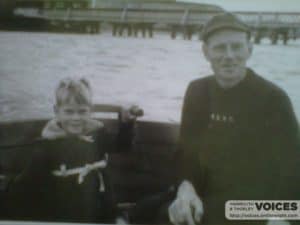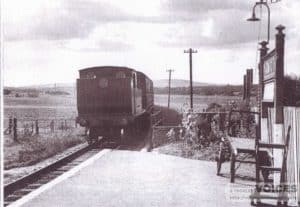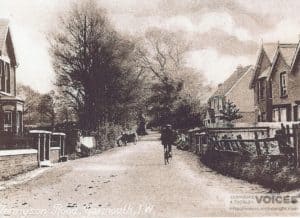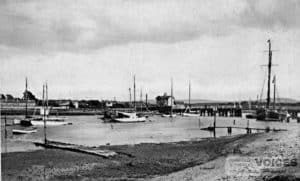
Yarmouth harbour showing Bridge House on the old bridge 1930s
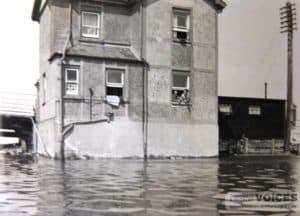
Doe family at Bridge House
I can remember as a toddler going to visit my grandparents when they were living in Bridge House, and standing on a table to look up the river. The top storey burnt down when someone was doing some decorating and using a blow torch, then it was used as a Customs House, and later still the Sailing Club.
The Harbour Commissioners gave my grandfather, ‘Pop’ a nice present when he retired – a launch. When I was young I used to go out with him over to Key Haven collecting seagulls eggs. We used to bring them back and eat them, they were quite strong, but nice. We used to go out winkling and prawning, and cook and eat those. I used to go with him, pigeon shooting up the railway line.
I had my first dinghy at 8, before that I used to borrow Pop’s. I suppose it was a bit unusual, there were hardly any others moored up the river where I kept mine. I always enjoyed small boats. Janet Hopkins b 1947




